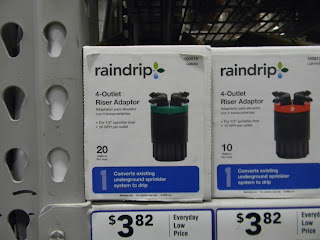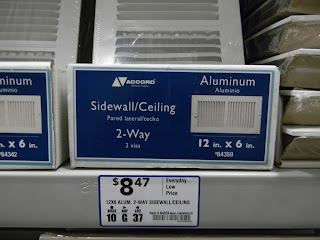Last week, we (a VAR and I) sold 4 TM-C3400 printers to a
manufacturer of plumbing supplies. With
19,000 SKU’s using 32 different label formats, this hardware manufacturer is a
perfect prospect for on-demand color labels.
As we have not as yet installed, I want to wait until the customer is
satisfied to tell you more.
Although not telling the story, I did have an idea. Why not use the concept of Six Degrees of
Separation to find more prospects like the hardware manufacturer above? If you don’t know this concept, Six Degrees of Separation is the idea that everyone in the world is
separated from everyone else by six links.
So I went to my neighborhood Lowe’s store walking up and
down the plumbing and electrical aisles looking for similar prospects to give
them to you. Take a look at these labels
on Flicker:
But what type of hardware manufacturer makes a good
prospect? First, the manufacturer has lots
of SKU’s.
Although I don’t know Kenney Manufacturing, it seems they
have many SKU’s; as they have lots of shelf space. Manufactures with a limited number of SKU’s,
don’t have to worry about maintaining an inventory of labels; and dealing with
waste when labels go out-of-date. The
greater the number of SKU’s, the better the candidate. Take a look at the FX Luminaire success
story:
Second, the manufacturer should use or want to use color Secondary Labels.
Third, the manufacturer has pictures, graphics and color
text on their labels:
This label from
Raindrip includes an image of the product, the Raindrip logo, and a color
background for important text information all on a white background. This product/company seems to be a perfect
candidate to move to on-demand color labels.
By moving to on-demand color, a company like Raindrip may save a
significant amount of money on labels.
Check out how Mercury Medical reduced their labeling costs by 67%.
Fourth, the manufacturer does not use labels with 100%
coverage. Take a look what I mean in the
picture of the label below:
When you “flood coat” or paint a label with ink, the cost to
produce the label increases dramatically.
Further, any imperfections arising during printing are more likely to
show up on the label. On-Demand color
labels work best when you want to add an image, graphics or color text on a
white label. In the list on Flikr, you
see several pictures of labels that have 100% coverage. But some of these companies may be amiable to
changing their labels slightly to get all the benefits that on-demand color
labels offer.
During my short trip to Lowe’s, I found approximately 40
plumbing and electrical hardware manufacturers that would seem to be good
prospects for on-demand color labels.
Instead of trying to contact these companies myself, I thought a better
idea would be to send the list to you. As
I said above, I believe some of you may have these companies as customers
already. Take another look at the pictures
of labels of manufacturing prospects to see if your customers are in the list:
If you have a customer in the list of label photos, contact
me so we can plan how to demonstrate to them the benefits of on-demand color
labels.
If you work in an area with one of these manufactures, I
recommend you try to find the correct individual to contact in the company. Ask him or her about using on-demand color
labels; and about their preprinted thermal transfer labels. Who knows what other business you may get by
making the initial contact to discuss the on-demand color technology?
Using Six Degrees of Separation, we’ll find good prospects
for on-demand color labels.
Guy Mikel





No comments:
Post a Comment